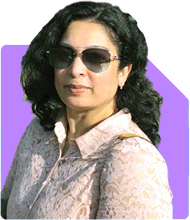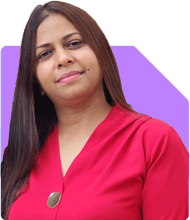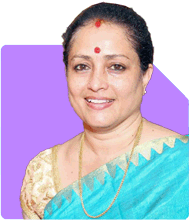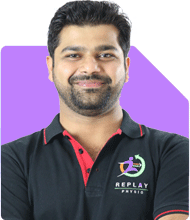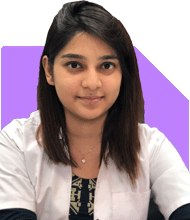प्रिय महोदय/महोदया,
मुझे अपने म्यूचुअल फंड निवेश जारी रखने के लिए कुछ मार्गदर्शन और सलाह चाहिए। मैं 36 वर्षीय पुरुष हूँ, विवाहित हूँ, अभी कोई बच्चा नहीं है और न ही मुझ पर कोई कर्ज़/देनदारियाँ हैं। मेरे पास PPF, NPS, आपातकालीन निधि और प्रत्यक्ष शेयरों में दीर्घकालिक निवेश के रूप में कुछ बचत राशि है। मैंने हाल ही में अपनी संपत्ति बढ़ाने के लिए नीचे दिए गए दीर्घकालिक SIP शुरू किए हैं। आपसे अनुरोध है कि आप इसकी समीक्षा करें और मुझे बताएँ कि क्या मुझे SIP जारी रखना चाहिए या इसे तर्कसंगत बनाने की आवश्यकता है। कृपया लगभग 6 लाख रुपये की एकमुश्त राशि का निवेश कैसे करें, इस बारे में भी सलाह दें।
इन्वेस्को स्मॉल कैप 2000
मोतीलाल ओसवाल मिडकैप 2700
पराग पारिख फ्लेक्सीकैप 3000
एचडीएफसी फ्लेक्सीकैप 3100
आईसीआईसीआई प्रूडेंशियल लार्जकैप 3100
एचडीएफसी लार्ज एंड मिडकैप 3100
एचडीएफसी गोल्ड ईटीएफ एफओएफ 2000
आईसीआईसीआई प्रू इक्विटी एंड डेट फंड 3000
एचडीएफसी बैलेंस्ड एडवांटेज फंड 3000
निप्पॉन इंडिया सिल्वर ईटीएफ एफओएफ 2000
Ans: आपने पहले ही एक ठोस आधार तैयार कर लिया है। कई निवेशक योजना बनाने में देरी करते हैं। लेकिन आपने 36 साल की उम्र में ही शुरुआत कर दी थी। इससे आपको एक मज़बूत फ़ायदा मिलता है। आपकी कोई देनदारी नहीं है। आपकी सोच लंबी अवधि की है। आपके पास पीपीएफ, एनपीएस, आपातकालीन निधि और डायरेक्ट स्टॉक जैसी विविध बचतें भी हैं। यह स्पष्टता और अनुशासन को दर्शाता है। यह दृष्टिकोण समय के साथ कम तनाव के साथ धन अर्जित करता है।
आपने इक्विटी फंडों में व्यवस्थित निवेश भी शुरू किया है। यह एक सकारात्मक कदम है। आपके चयन में लार्ज कैप, मिड कैप, स्मॉल कैप, फ्लेक्सी कैप, हाइब्रिड और कीमती धातु जैसी कई श्रेणियां शामिल हैं। इसलिए इरादा सही है। आप एक व्यापक पोर्टफोलियो बनाने की कोशिश कर रहे हैं। इससे संतुलन मिलता है।
» आपके पोर्टफोलियो संरचना की समझ
आपकी वर्तमान एसआईपी सूची में शामिल हैं:
स्मॉल कैप
मिड कैप
फ्लेक्सी कैप
लार्ज कैप
लार्ज और मिड कैप
हाइब्रिड श्रेणी
सोना और चांदी का फंडामेंटल फंड
इक्विटी और डेट एलोकेशन फंड
डायनेमिक हाइब्रिड फंड
यह दर्शाता है कि आप कई क्षेत्रों को कवर करने की कोशिश कर रहे हैं। लेकिन बहुत सारी श्रेणियां ओवरलैप पैदा कर सकती हैं। जब ओवरलैप होता है, तो समीक्षा के दौरान आपको भ्रम होता है। इससे पोर्टफोलियो अनुशासन भी मुश्किल हो जाता है। आपको लग सकता है कि आप डायवर्सिफाइड हैं। लेकिन अंदर की होल्डिंग्स दोहराई जा सकती हैं। इससे दक्षता कम हो जाती है।
अब आपका पोर्टफोलियो इस तरह दिखता है:
इक्विटी प्रमुख
स्थिरता के लिए हाइब्रिड
हेजिंग के लिए धातु
इसलिए व्यापक दिशा ठीक है। लेकिन सरलीकरण दीर्घकालिक आदत बनाने में मदद करता है।
» फंड श्रेणी दोहराव
आपके पास हैं:
दो फ्लेक्सी कैप फंड
एक लार्ज और मिड कैप फंड
एक शुद्ध लार्ज कैप फंड
एक मिड कैप फंड
एक स्मॉल कैप फंड
फ्लेक्सी कैप फंड पहले से ही लार्ज, मिड और स्मॉल में निवेश करते हैं। फिर लार्ज और मिड भी ओवरलैप हो जाते हैं। इसलिए लार्ज कैप एक्सपोजर दोहराया जाता है। इससे अतिरिक्त लाभ नहीं मिल सकता है। लेकिन इससे निगरानी की जटिलता बढ़ जाती है।
इसलिए मैं युक्तिसंगत बनाने का सुझाव देता हूँ। प्रत्येक श्रेणी में एक फंड कोर में रखें। केवल उच्च विश्वास के लिए सैटेलाइट स्पेस रखें।
» कोर और सैटेलाइट रणनीति
एक संरचित पोर्टफोलियो कोर और सैटेलाइट पद्धति का पालन करता है।
कोर पोर्टफोलियो इस प्रकार होना चाहिए:
सरल
दीर्घकालिक
स्थिर
सैटेलाइट पोर्टफोलियो इस प्रकार हो सकता है:
उच्च वृद्धि
केंद्रित
अपनी सोच के स्तर के आधार पर, आप इस प्रकार संरचना बना सकते हैं:
कोर फंड:
एक लार्ज कैप
एक फ्लेक्सी कैप
एक हाइब्रिड इक्विटी और डेट फंड
एक संतुलित लाभ प्रकार का फंड
सैटेलाइट फंड:
एक मिड कैप
एक स्मॉल कैप
ज़रूरत पड़ने पर एक मेटल आवंटन
यह विभाजन स्पष्टता प्रदान करता है। आप हर साल समीक्षा के साथ SIP जारी रख सकते हैं। बार-बार रोकने और फिर से शुरू करने की आवश्यकता नहीं है। इससे व्यवहार संबंधी गलतियाँ कम होती हैं।
» सुझाए गए सुव्यवस्थितीकरण के साथ आपकी वर्तमान SIP सूची की समीक्षा
आप जारी रखने पर विचार कर सकते हैं:
एक फ्लेक्सी कैप
एक लार्ज कैप
एक मिड कैप
एक स्मॉल कैप
एक संतुलित लाभ
एक इक्विटी और डेट हाइब्रिड
आप दोनों फ्लेक्सी कैप और दोनों गोल्ड सिल्वर फंड रखने पर पुनर्विचार कर सकते हैं। प्रत्येक श्रेणी का एक फंड पर्याप्त है। क्योंकि बहुत सारे फंड रिटर्न नहीं बढ़ाते हैं। इससे ट्रैकिंग जटिल हो जाती है।
आपके पोर्टफोलियो में कीमती धातु फंडों का निवेश 5 से 7 प्रतिशत से ज़्यादा नहीं होना चाहिए। ऐसा इसलिए है क्योंकि धातुएँ हेज एसेट हैं। ये इक्विटी की तरह चक्रवृद्धि ब्याज नहीं देते। ये चक्रों के दौरान सुरक्षा प्रदान करते हैं। इसलिए इन्हें छोटा रखें।
"6 लाख रुपये की एकमुश्त राशि का उपयोग कैसे करें"
आपने एकमुश्त निवेश के बारे में पूछा था। यह महत्वपूर्ण है। एकमुश्त राशि एक बार में पूरी तरह से इक्विटी में नहीं लगनी चाहिए। बाज़ार चक्रों में चलते हैं। इसलिए चरणबद्ध तरीके से निवेश करें। आप एसटीपी (सिस्टमेटिक ट्रांसफर प्लान) के ज़रिए एकमुश्त राशि निवेश कर सकते हैं। आप इस राशि को लिक्विड फंड में रख सकते हैं और 6 से 12 महीनों में अपने चुने हुए ग्रोथ फंडों में एसटीपी लगा सकते हैं।
इससे समय का जोखिम कम होता है। इससे अनुशासन भी बनता है। इसलिए आपके 6 लाख रुपये धीरे-धीरे निवेश किए जा सकते हैं। आप 50% कोर इक्विटी फंडों में और 30% सैटेलाइट ग्रोथ श्रेणी में लगा सकते हैं। शेष 20% हाइब्रिड श्रेणी में जा सकते हैं। इससे संतुलन और सुविधा मिलती है।
"डायरेक्ट फंडों की तुलना में रेगुलर फंडों में निवेश करें"
एक महत्वपूर्ण बात जो कई निवेशक भूल जाते हैं। प्रत्यक्ष फंड सस्ते लगते हैं। लेकिन इनके लिए गहन ज्ञान, अनुशासन और व्यवहार नियंत्रण की आवश्यकता होती है। अधिकांश निवेशक भावनात्मक बिकवाली और गलत समय के कारण व्यय अनुपात पर बचत की तुलना में अधिक नुकसान उठाते हैं।
प्रमाणित वित्तीय योजनाकार योग्यता वाले म्यूचुअल फंड वितरक के माध्यम से नियमित फंड के साथ, आपको मार्गदर्शन, संरचना और सुधार मिलता है। सलाहकार अनुशासन आपको बाजार के उतार-चढ़ाव के दौरान सुरक्षा प्रदान करता है। यह व्यय अनुपात में थोड़ी बचत से कहीं अधिक मूल्यवान है।
एक व्यक्तिगत योजनाकार पोर्टफोलियो के बहाव, पुनर्संतुलन की आवश्यकता और श्रेणी में बदलाव पर भी नज़र रखता है। इसलिए नियमित फंड निवेश दीर्घकालिक लाभ और व्यवहार प्रशिक्षण प्रदान करता है।
"इंडेक्स या ईटीएफ की तुलना में सक्रिय रूप से प्रबंधित फंड"
कुछ निवेशक इंडेक्स फंड या ईटीएफ को यह सोचकर चुनते हैं कि वे सरल और सस्ते हैं। लेकिन वे कमियों को नज़रअंदाज़ कर देते हैं।
इंडेक्स फंड या ईटीएफ इंडेक्स में कमज़ोर कंपनियों से नहीं बचेंगे। वे निवेश करेंगे चाहे कंपनी बढ़े या संघर्ष करे। फंड मैनेजर कोई निर्णय नहीं लेता। इसलिए जब बाजार चरम पर होता है, तो इंडेक्स फंड आक्रामक निवेश जारी रखते हैं। मंदी में भी वे पूरी तरह से गिर जाते हैं। कोई सहारा नहीं होता।
सक्रिय रूप से प्रबंधित फंड अनुसंधान टीमों के साथ काम करते हैं। वे खराब क्षेत्रों से बच सकते हैं। वे बाज़ार और अर्थव्यवस्था के आधार पर आवंटन में बदलाव कर सकते हैं। लंबी अवधि में, इससे बेहतर अल्फा और स्थिरता मिलती है। इसलिए सक्रिय रूप से प्रबंधित फंडों को जारी रखने से बेहतर वेल्थ कंपाउंडिंग होती है।
"SIP निरंतरता रणनीति"
एक बार युक्तिकरण हो जाने के बाद, बिना किसी रुकावट के हर महीने SIP जारी रखें। बार-बार रुकने और फिर से शुरू करने की आदत कंपाउंडिंग क्षमता को नुकसान पहुँचाती है। SIP तब सबसे अच्छा काम करता है जब आप सभी बाज़ार चक्रों से गुज़रते हैं। आपको सुधार के दौरान ज़्यादा फ़ायदा होता है क्योंकि कॉस्ट एवरेजिंग कारगर होती है।
इसलिए SIP राशि जारी रखें। आप आय के आधार पर हर साल SIP वृद्धि की समीक्षा भी कर सकते हैं। हर साल SIP में 10 से 15 प्रतिशत की वृद्धि करने से आपको तेज़ी से बड़ी राशि तक पहुँचने में मदद मिलती है।
"एसेट एलोकेशन आधारित दृष्टिकोण"
धन सृजन में एक महत्वपूर्ण बिंदु सही एसेट मिश्रण का होना है। इक्विटी वृद्धि देता है। हाइब्रिड संतुलन देता है। धातुएँ बचाव प्रदान करती हैं। डेट सुरक्षा प्रदान करता है। आपका एसेट एलोकेशन आपके जोखिम प्रोफ़ाइल और समय सीमा के अनुरूप होना चाहिए।
चूँकि आप युवा हैं और आपकी दीर्घकालिक योजना है, इसलिए ज़्यादा इक्विटी एलोकेशन ठीक है। लेकिन जैसे-जैसे समय बीतता है, पुनर्संतुलन महत्वपूर्ण होता जाता है। पुनर्संतुलन लाभ की रक्षा करता है और आवंटन को पुनर्स्थापित करता है।
इसलिए हर साल या बच्चे के जन्म, घर खरीदने या सेवानिवृत्ति योजना जैसी प्रमुख जीवन घटनाओं के दौरान अपने परिसंपत्ति आवंटन की समीक्षा करें।
» व्यवहार प्रबंधन
कई पोर्टफोलियो खराब फंडों के कारण नहीं, बल्कि गलत फैसलों के कारण विफल होते हैं। गिरावट के दौरान बेचना। बाजार में गिरावट के समय एसआईपी बंद कर देना। पिछले रिटर्न के प्रदर्शन का पीछा करना। ये गलतियाँ धन को कम करती हैं।
अब तक आपका अनुशासन अच्छा रहा है। अस्थिरता के दौरान धैर्य बनाए रखें। इक्विटी धैर्य और समय का प्रतिफल देती है।
» वित्तीय लक्ष्यों की स्पष्टता
चूँकि अभी आपके कोई बच्चे नहीं हैं, इसलिए आप अपने दीर्घकालिक लक्ष्य तय कर सकते हैं। सामान्य लक्ष्यों में शामिल हो सकते हैं:
सेवानिवृत्ति
भविष्य के बच्चे की शिक्षा
सपनों वाली जीवनशैली खरीदना
स्वास्थ्य सेवा भंडार
जब लक्ष्य स्पष्ट होते हैं, तो निवेश का उद्देश्य और भी मज़बूत हो जाता है। इसलिए आप प्रत्येक फंड श्रेणी को लक्ष्य क्षितिज से जोड़ सकते हैं। अल्पकालिक लक्ष्यों में इक्विटी का उपयोग नहीं करना चाहिए। दीर्घकालिक लक्ष्यों में हाइब्रिड समर्थन वाली इक्विटी का उपयोग करना चाहिए।
» समीक्षा और निगरानी की भूमिका
साल में एक बार समीक्षा करना पर्याप्त है। बार-बार समीक्षा करने से चिंता हो सकती है। वार्षिक समीक्षा निम्नलिखित की जाँच करने में मदद करती है:
फ़ंड का प्रदर्शन
व्यय विचलन
श्रेणी प्रासंगिकता
आवंटन संतुलन
फिर ज़रूरत पड़ने पर ही समायोजन करें। यह प्रगति आपको आत्मविश्वास और संतुलित रहने में मदद करती है।
"कर जागरूकता"
इक्विटी म्यूचुअल फ़ंड के कराधान नियम इस प्रकार हैं:
अल्पकालिक (एक वर्ष से कम होल्डिंग) पर 20 प्रतिशत कर लगेगा
दीर्घकालिक (एक वर्ष से अधिक होल्डिंग) पर 1.25 लाख रुपये से अधिक का लाभ 12.5 प्रतिशत कर लगेगा
डेट म्यूचुअल फ़ंड पर आपके आय स्लैब के अनुसार कर लगता है।
इसलिए इक्विटी फ़ंड को हमेशा लंबी अवधि के लिए रखें। इससे कर का प्रभाव कम होता है और बेहतर वृद्धि होती है।
"एसआईपी वृद्धि योजना"
आप समय के साथ एसआईपी बढ़ाने के लिए एक सरल योजना बना सकते हैं। उदाहरण के लिए:
हर वेतन वृद्धि पर SIP बढ़ाएँ
बोनस के समय SIP बढ़ाएँ
निवेश के लिए रिवॉर्ड या अतिरिक्त आय का उपयोग करें
यह आदत धन प्राप्ति में तेज़ी लाती है। इसलिए जब आप 45 से 50 वर्ष की आयु तक पहुँचते हैं, तो आपके निवेश एक मज़बूत स्तर पर पहुँच सकते हैं।
"बीमा और सुरक्षा"
बड़ा निवेश करने से पहले, सुनिश्चित करें कि आपके पास टर्म इंश्योरेंस और स्वास्थ्य बीमा है। अगर आपने पहले से नहीं लिया है, तो यह ज़रूरी है। बीमा धन की सुरक्षा करता है। बीमा के बिना, एक छोटी सी भी चिकित्सा दुर्घटना निवेश योजना को प्रभावित कर सकती है। इसलिए इस पहलू पर भी नज़र डालें। चूँकि आप विवाहित हैं, इसलिए दोनों को कवर करें।
"धन व्यवहार मानसिकता"
आप पहले से ही अनुशासित हैं। बस इन सरल सिद्धांतों का पालन करें:
बिना रुके निवेश करें
साल में एक बार समीक्षा करें
फंड ओवरलैप से बचें
एसेट एलोकेशन का पालन करें
मीडिया के शोर पर प्रतिक्रिया देने से बचें
यह आपको दीर्घकालिक लक्ष्यों तक पहुँचने में मदद करता है।
"अंततः"
आप सही रास्ते पर हैं। बस बारीक़ी और सरलीकरण की ज़रूरत है। आपका अनुशासन दिखाई दे रहा है। संरचना, धैर्य और समय-समय पर समीक्षा से आपका पोर्टफोलियो अच्छी तरह बढ़ेगा। 6 लाख रुपये के निवेश को एसटीपी (STP) के साथ अपनाएँ। और तर्कसंगत श्रेणियों के साथ एसआईपी (SIP) जारी रखें।
समय और निरंतरता के साथ, धन सृजन सहज और शांतिपूर्ण हो जाता है। आपको बस प्रतिबद्ध रहने और बाजार की चाल के दौरान ज़्यादा सोचने से बचने की ज़रूरत है।
सादर,
के. रामलिंगम, एमबीए, सीएफपी,
मुख्य वित्तीय योजनाकार,
www.holisticinvestment.in
https://www.youtube.com/@HolisticInvestment






